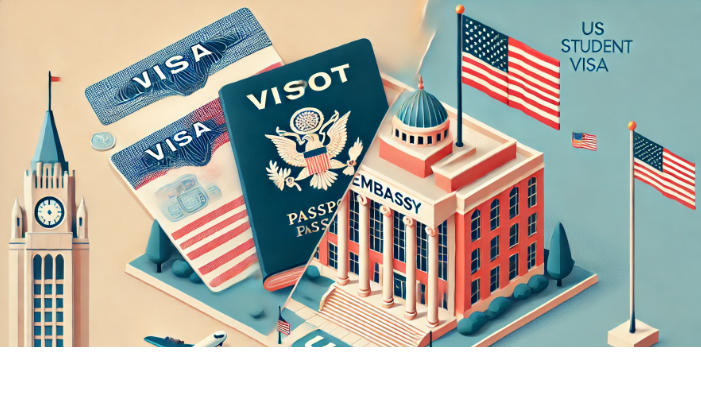- Remittance
- Exchange Rate
- Stock
- Events
- EasyCard
- More
- Download
How to Quickly Obtain a U.S. Student Visa: Visa Types, Essential Documents Checklist, and Detailed P
The United States, with its high-quality educational resources, rich academic environment, and broad development prospects, has always been a top destination for many international students. Successfully applying for a U.S. student visa is a crucial step in realizing this dream.
Whether planning to pursue academic courses or participate in exchange programs, understanding and mastering the visa application process and required documents is essential. Applicants should organize their thoughts and make full preparations to smoothly obtain their visa and achieve their study abroad aspirations.

Analysis of Visa Types
Before applying for a U.S. student visa, it is important to understand the different types of visas and their applicable ranges. Each type of visa caters to different study purposes and course setups. Applicants need to choose the appropriate visa type based on their own circumstances.
F-1 Visa
The F-1 visa is the most common type of student visa, primarily for students planning to pursue academic courses in the U.S. This includes students seeking undergraduate, master’s, or doctoral degrees, as well as those participating in language training courses. Students holding an F-1 visa need to study full-time and are only allowed to work off-campus under limited circumstances.
J-1 Visa
The J-1 visa is mainly for students and scholars participating in exchange programs, including government-funded exchange programs, internship programs, and short-term academic visits. J-1 visa holders are typically supported and funded by their exchange program.
M-1 Visa
The M-1 visa is designed for students attending vocational and technical training courses. Unlike the F-1 visa, M-1 visa holders are not allowed to switch to other non-immigrant visas or apply for permanent resident status after the completion of their courses.
Detailed Process
Applying for a U.S. student visa involves following specific steps, ensuring all materials are thoroughly prepared and submitted on time. Below is a detailed application process:
I-20 Form and Fees
After being accepted by a U.S. school, the school will register you through SEVIS (Student and Exchange Visitor Information System) and issue an I-20 form. Upon receiving the I-20 form, you need to pay the SEVIS fee and keep the receipt as proof for your visa application.
DS-160 Form
The DS-160 form is the online application for non-immigrant visas. It must be completed and submitted accurately, with a compliant photo uploaded. After submitting the DS-160 form, pay the visa application fee and keep the receipt.
Scheduling a Visa Interview
Schedule a visa interview through the U.S. embassy or consulate website. Choose the most convenient embassy or consulate based on your residence and ensure to attend the interview on time as per the appointment.
Essential Documents Checklist:
- Passport: Valid for at least six months beyond your intended stay
- I-20 Form: Provided by the school
- DS-160 Confirmation Page: Print the confirmation page after completing the online form
- Photo: A visa-compliant photo with a white background, front view, 2x2 inches in size, taken within the last six months
- SEVIS Fee Receipt: Proof of SEVIS fee payment
- Visa Application Fee Receipt: Proof of visa application fee payment
- Financial Proof: Bank statements, sponsor’s financial support proof, etc., to show sufficient funds for study and living expenses in the U.S.
- Acceptance Letter: Official acceptance letter from the school
- Academic Records: Transcripts, diplomas, and other academic credentials
For transferring tuition and living expenses quickly and securely to the U.S., it is recommended to use the international remittance platform BiyaPay. With BiyaPay, transaction fees are as low as 0.5%, with no limit on the amount transferred. It supports local transfers in most regions or countries worldwide, with same-day processing.
Visa Interview
Arrive at the embassy or consulate on time for your interview, bringing all required and supporting documents. Be honest and confident during the interview, emphasizing your study purpose and plans. Provide clear and concise answers.
Visa Approval and Collection
The consular officer will review your application and interview to decide on approval or denial. If approved, follow the instructions from the embassy or consulate to collect your visa. Generally, the visa approval process takes several days, so applicants need to be patient.
Conclusion
In summary, applying for a U.S. student visa is a complex but orderly process. By fully understanding the visa types, strictly following the application procedures, meticulously preparing the required materials, and participating in the interview with sincerity and confidence, applicants can enhance their chances of a successful visa application. May every student with a study abroad dream successfully obtain their visa and embark on an exciting academic journey in the U.S., pursuing their academic and life goals.

























